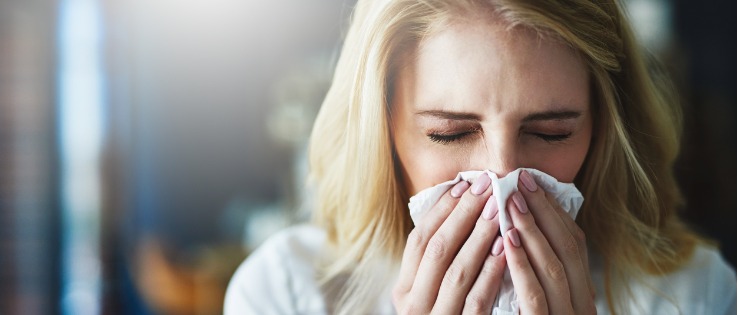
While most of us welcome spring after a long winter, it’s not fun for hay fever sufferers.
There are a number of hay fever medications available on the market but some people prefer to try more natural alternatives, particularly if their hay fever hangs around for weeks.
Some have found success with these remedies while others haven’t. It’s a matter of trialling different remedies to find what works for you.
What is Hay Fever?
Hay fever, known as allergic rhinitis, is a common respiratory condition that impacts around three million Australians.
Seasonal hay fever usually happens in spring and summer and is caused by airborne pollen from trees, grass and weeds. Some people suffer from perennial hay fever which is an allergic condition that comes and goes throughout the year.
Hay fever occurs when the body’s immune system believes the pollen is harmful and triggers the antibody immunoglobulin E to be released. This also triggers the release of histamine which starts the hay fever symptoms.
Symptoms of Hay Fever
The symptoms of hay fever are similar to those of the common cold.
Itchy, watery and red eyes
Sneezing, runny nose
Swollen, sensitive nose
Itchy or sore back of the throat
Coughing
Fatigue, problems sleeping, snoring
Facial pain and frequent headaches
Middle ear infections
Bad breath
Allergies can worsen other chronic respiratory problems such as asthma, sinusitis and skin disorders like eczema and urticaria (hives). At least three out of four people with asthma also suffer from allergic rhinitis.
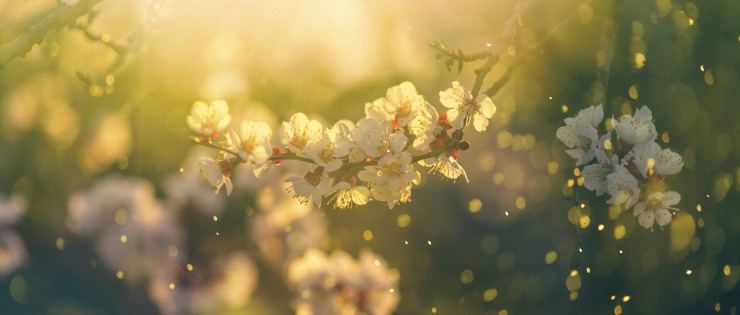
#1 Avoid the Triggers - Prevention is Better Than a Cure
If you know what the main causes of your hay fever are, you can do your best to avoid them. The most common triggers of hay fever are pollen, grass, dust, dust mites, cat saliva, and dog dander.
Dust
Keeping the house as dust-free as possible can make a big difference when it comes to your hay fever. If possible, replace carpets with hard flooring, and make sure you vacuum and mop often. When dusting surfaces in the house, use a damp cloth rather than a duster that can kick dust into the air.
While dusting, be sure to wear a mask and glasses to help keep the dust away from your eyes, nose and mouth. Wash your hands thoroughly after dusting.
Dust Mites
Our beds are a haven for dust mites, so make sure you change your sheets weekly and wash on a hot cycle. While the bed is stripped, sprinkle a little bicarbonate soda on the mattress then vacuum to freshen it up. Thoroughly and regularly vacuuming your carpet or hard floor can go a long way to preventing dust mites.
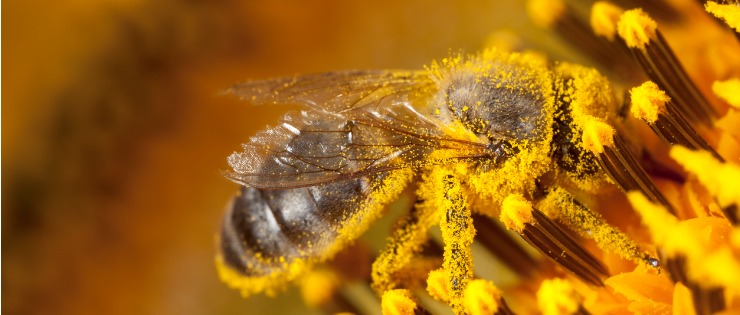
Pollen
The pollen count is usually at its highest during spring and summer in Australia. When the pollen count is high, try to avoid spending too much time outside during the morning and when it’s dry and/or windy. You can also try drying your washing indoors rather than on an outdoor washing line, which is exposed to pollen in the air. Finally, another thing to try when the pollen count is high is to sleep with your bedroom window closed at night.
Residents in Victoria, New South Wales, Tasmania and Canberra can check the pollen forecast for the next seven days. All other cities can check the Weather Channel, which breaks up the pollen count into tree pollen, grass pollen and ragweed pollen.
Pets
If you have pets inside, it’s hard to avoid an allergic reaction from their saliva or dander. Keep the house well vacuumed and aired to reduce the effects, and encourage your pets to spend more time outside.
Mould
Mould spores can cause an allergic reaction and travel throughout the home. Treat any mould in wet areas as soon as you see it and call in a mould expert if it returns. Damp houses have higher mould counts than dry houses. Try to air your home as often as possible, particularly in the bathroom and laundry.

Smoke
People who suffer from hay fever should avoid cigarette and bushfire smoke, as it can make the condition worse.
#2 Wash off the Pollen
When you come back inside from enjoying the sunshine, wash your hands. If your symptoms are particularly bad after spending a long period of time outside, it might be worth changing out of the clothes you wore. Wash your clothes in the machine to remove the pollen. It’s also best to shower before bed to wash the pollen off your skin and hair so you can hopefully enjoy a symptom-free sleep.
#3 Herbal Teas
Herbal teas have been used as natural remedies for centuries. With no caffeine and anti-inflammatory properties, they have helped relieve everything from gastrointestinal upsets, arthritis to migraines and hay fever.
Nettles are thought to block histamine activity and other inflammatory molecules in hay fever. Licorice and peppermint are both ideal for releasing congestion and mucus around the nose, as well as soothing the throat. Chamomile works to clear excess mucus from the lungs and reduce inflammation.
Elderflower is known to dry mucous membranes in the nose and throat which reduces sneezing and a runny nose.
Turmeric and ginger have anti-inflammatory properties so they can be beneficial in reducing swelling caused by hay fever. Both of these ingredients can be added to meals or digested as a hot drink.

#4 Saline Nasal Wash or Spray
Our noses are designed to be self-clearing systems that remove dust, pollen and allergens from the nasal passage. The tiny hairs, which are called cilia, sweep mucus through the sinus and out into the nose. However, infections or congestion are what upsets this function.
A nasal wash is easy for adults and children to do, offering several benefits including:
Removing allergen particles from the nose
Removing mucus (ideal before nasal medication)
Reduce nasal swelling and increase airflow
Reduce dryness and irritation of nasal membrane
Remove bacteria and viruses to reduce infections
Make Your Own Nasal Wash
You can buy a sterile saline spray from the pharmacy or make your own. Follow these simple steps if you’re looking to make your own nasal wash:
Look for a squeeze bottle with a spout designed for nose rinsing.
Fill with water that’s distilled, sterile boiled and cooled, or filtered water.
Rinse the spout with boiled and cooled water or filtered water after each use and leave to air dry.
Blow your nose several times after the wash to remove mucus.
Whether you purchase one or make your own, a nasal wash one hour before bed can help with breathing during sleep.
#5 Foods That Work to Fight Hay Fever
There are several foods that have been identified as beneficial in helping to reduce hay fever symptoms.
Garlic
Garlic has long been used as a cure-all for many ailments, including hay fever. Garlic contains quercetin, which is a natural antihistamine. Garlic can help with clearing congestion in the nose and even prevent secondary respiratory infections because of its natural antibiotic properties. Add minced garlic to your meals or try eating black garlic which is softer, sweeter and chewier than raw garlic due to the low heat cooking process. Onions are also a good source of quercetin and can be eaten raw in salad dishes or cooked in hot meals.
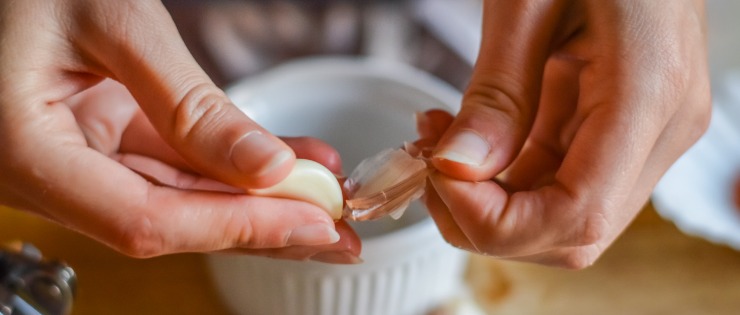
Fruit
If you’d prefer something on the sweet side, there are fruits you can try to help fight hay fever. Pineapple contains bromelain, an enzyme with strong anti-inflammatory effects that can help reduce inflammation and congestion.
Kiwi fruit is packed with vitamin C, bioflavanoids and antioxidants. All of these nutrients are a natural antihistamine, anti-inflammatory and supports the immune system.
Apricots and mangos have high levels of beta-carotene, which convert to vitamin A in the body, promoting healthy mucous membranes and immune function. You can also get a dose of quercetin in apples, red grapes, cherries and berries.
Vegetables
Vegetables that contain beta-carotene including pumpkin, carrots and leafy greens are ideal for hay fever sufferers.
#6 Inhaling Steam
Some people find relief from hay fever symptoms with steam. A 2014 study found that taking a steam bath for 30 minutes three times a week for a month improved hay fever symptoms. One group bathed with herbs while the other group used no herbs, with no difference in result recorded between the two.
A 2016 study found inhaling aromatherapy oils greatly improved symptoms, quality of life and sleep. One group inhaled aromatherapy oil containing essential oils from sandalwood, geranium and ravensara for five minutes - twice daily for seven days - while the control group used almond oil. The researchers found the essential oils group was able to alleviate perennial allergic rhinitis.
#7 Clean Surfaces
Keep up the cleaning! Pollen settles on surfaces and can make your symptoms worse. Use a damp cloth to wipe dusty surfaces to stop pollen and dust from floating into the air. If you keep windows and doors open in spring and summer, you will have more pollen in the house, so wipe over hard surfaces with a damp cloth regularly to reduce the pollen count inside your home. Use a vacuum cleaner with a filter so the pollen and dust don’t escape from the bag and back into the air.
Natural Hay Fever Remedies That Are Myths
There’s always many myths and old wives’ tales surrounding natural remedies.
Myth #1 Honey
It’s believed that a teaspoon per day of natural, unprocessed honey can reduce the symptoms of hay fever because it contains tiny pollen particles that desensitize the allergic reaction. Multiple studies have found this to be a myth. The pollen contained in honey is almost all heavy, flower pollen which doesn’t cause hay fever. It’s the light pollen from trees and grasses that is to blame. If nothing else, hot water with honey might make you feel better and help clear the nose.
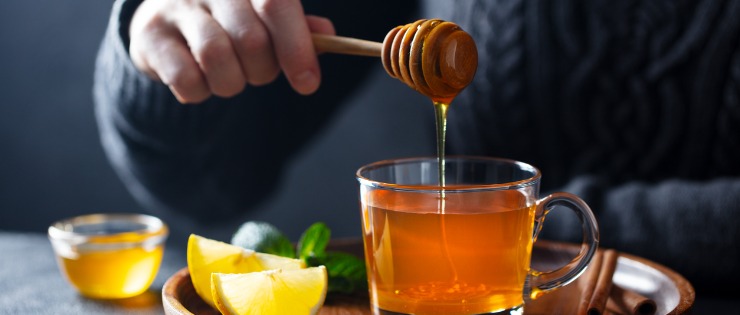
Myth #2 Supplements
A number of supplements including echinacea and propolis have been promoted as helping with hay fever symptoms. However, there is no evidence to support their effectiveness.
Some people promote bee pollen extract but the results are inconclusive. Both echinacea and bee pollen extract have caused anaphylactic reactions in some people. Just because it’s natural, it doesn’t mean it’s suitable for everyone, so use caution and consult your doctor.
Myth #3 Eliminating Dairy from Your Diet
Cutting out dairy can play a part in reducing hay fever symptoms, though there’s no scientific evidence to support this claim. Some people believe that dairy foods should be avoided because they produce mucus in the airways. Eliminating an important food group like dairy can affect nutrition, particularly in children. Always check with your GP before eliminating a food group from yours or your child’s diet as you may be doing more harm than good.
If you have severe allergies or allergic reactions, see your doctor. Safe and effective medications are available to prevent and treat hay fever.